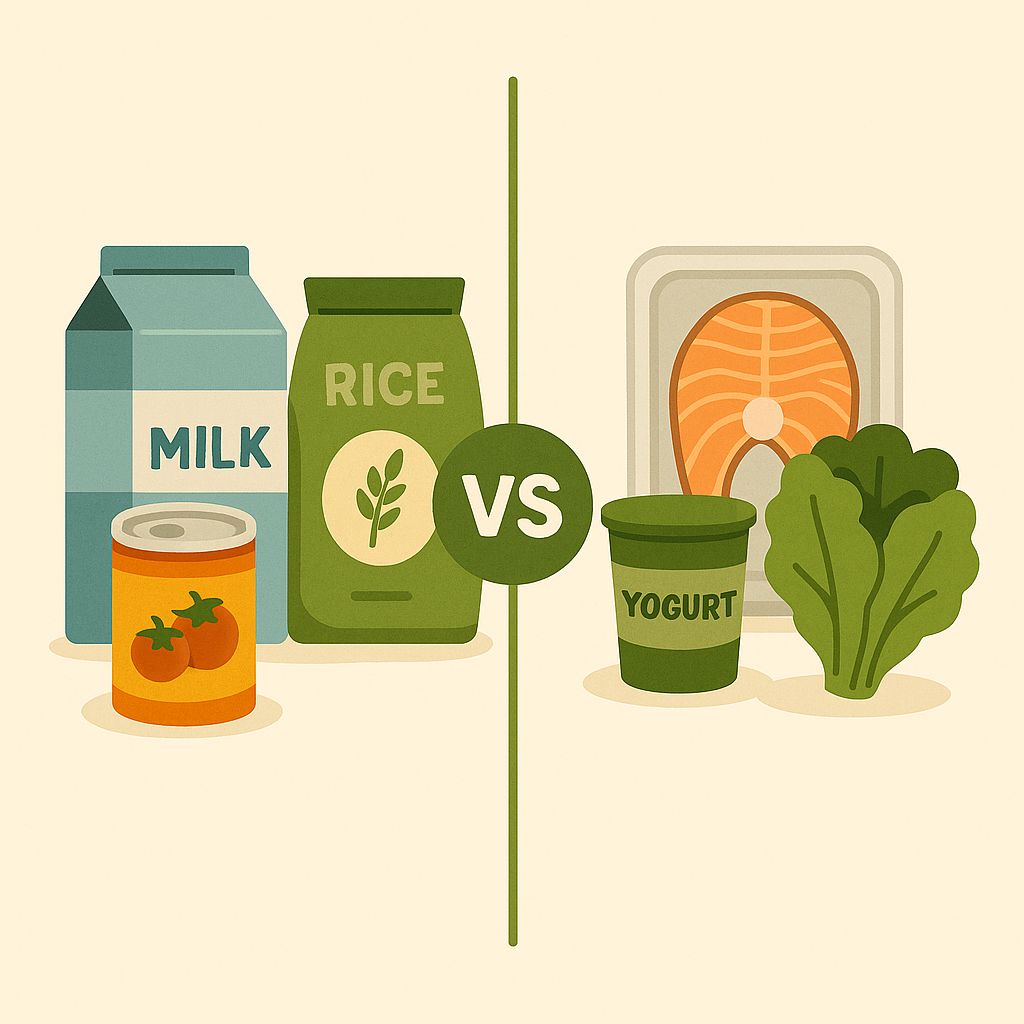Storing food correctly – this is how you avoid food waste
With a few simple habits, your food will stay fresh longer, taste better – and you'll save money. Here are the most important principles and practical tips.
Basic rules for home storage
FIFO – First In, First Out
What's bought first gets used first. Put new purchases at the back and older products at the front – in the refrigerator and pantry.
The right temperature
| Area | Optimal |
|---|---|
| Pantry / larder | ≈ 15 °C or cooler |
| Refrigerator | 4–8 °C (ideally ~5 °C) |
| freezer | -18 °C |
Tip: A thermometer helps to detect fluctuations early.
Store in an airtight container & organize well
- Containers: Jars with rubber seals or reusable containers protect against air and moisture.
- Labeling: Contents + purchase/preparation date make it easier to keep track.
- Categories: e.g. canned goods, baking ingredients, snacks – so nothing happens “in the back”.
How to properly store different foods
Fruit & Vegetables
- Be aware of ethylene: Store apples, bananas, and tomatoes separately from sensitive varieties (berries, cucumbers).
- Vegetable drawer: Carrots, celery, and broccoli stay crisp longer here.
- Cool & dark: Do not store potatoes and onions in the refrigerator, but at 10–15 °C.
- Salads: Keep fresh in perforated bags or wrapped in a damp cloth.
Dairy products & eggs
- Center instead of door: More constant temperatures for milk, yogurt, cheese.
- Eggs: In the original packaging, pointed end down.
- Cheese: Hard cheese should be wrapped in cheese/parchment paper; soft cheese should be consumed promptly after opening.
Bread & Baked Goods
- Room temperature: bread box or linen bag – do not refrigerate.
- Freezing: Slice by slice for up to 3 months; remove as needed.
- Cakes: Put cakes containing cream/cream cheese in the refrigerator, and sponge cakes under a dome.
Dry goods
- Airtight & dry: Protect rice, pasta, and flour from moisture and pests.
- Flour Extra: Optionally freeze – extends shelf life, prevents pest infestation.
- Spices: Store away from light; whole spices retain their aroma better than ground spices.
Meat, fish & leftovers
- Store at the very bottom: coldest zone, protects against dripping liquid.
- Minced meat: Use on the same day; poultry max. 2 days, beef up to 4 days.
- Leftovers: Allow to cool completely, then store in sealed containers in a cool place for 3-4 days.
Practical helpers
- Glass containers & BPA-free tins: Durable, odorless, dishwasher safe.
- Beeswax wraps: A reusable alternative to cling film.
- Vacuum bags: Ideal for portioning and preventing freezer burn.
- Thermometer: Alarm sounds in case of temperature deviations (defective seal, doors left open).
Plan cleverly & use up leftovers
Weekly tip: Check your supplies → write a weekly plan → make a shopping list. Cook larger quantities and use leftovers for soups, bowls, or casseroles.
Rescued food helps in two ways: you try new things, save money and reduce waste.
Making good use of kitchen waste
Vegetable peels, coffee grounds, and eggshells can be composted – using a thermal composter, Bokashi, or worm bin. This creates nutrient-rich humus for your balcony and garden.
Conclusion: Small steps, big impact
With clear organization, airtight containers, and stable temperatures, you can extend the shelf life of your food – and save money, resources, and energy. Every step counts.



